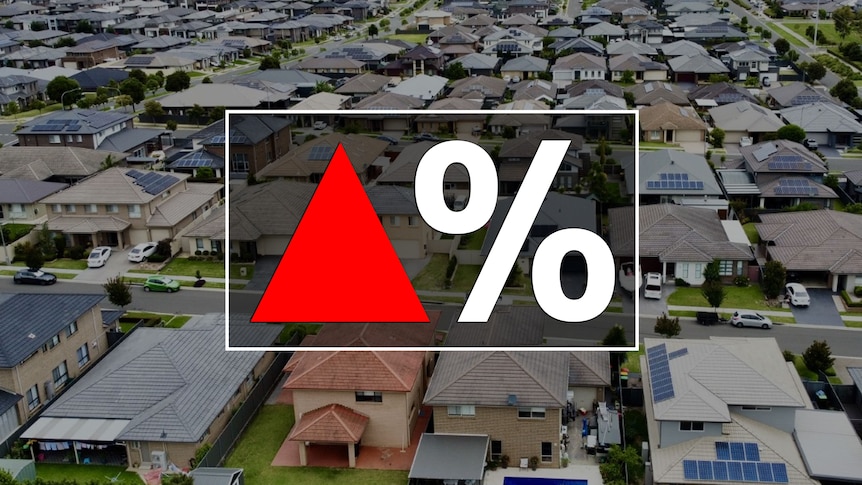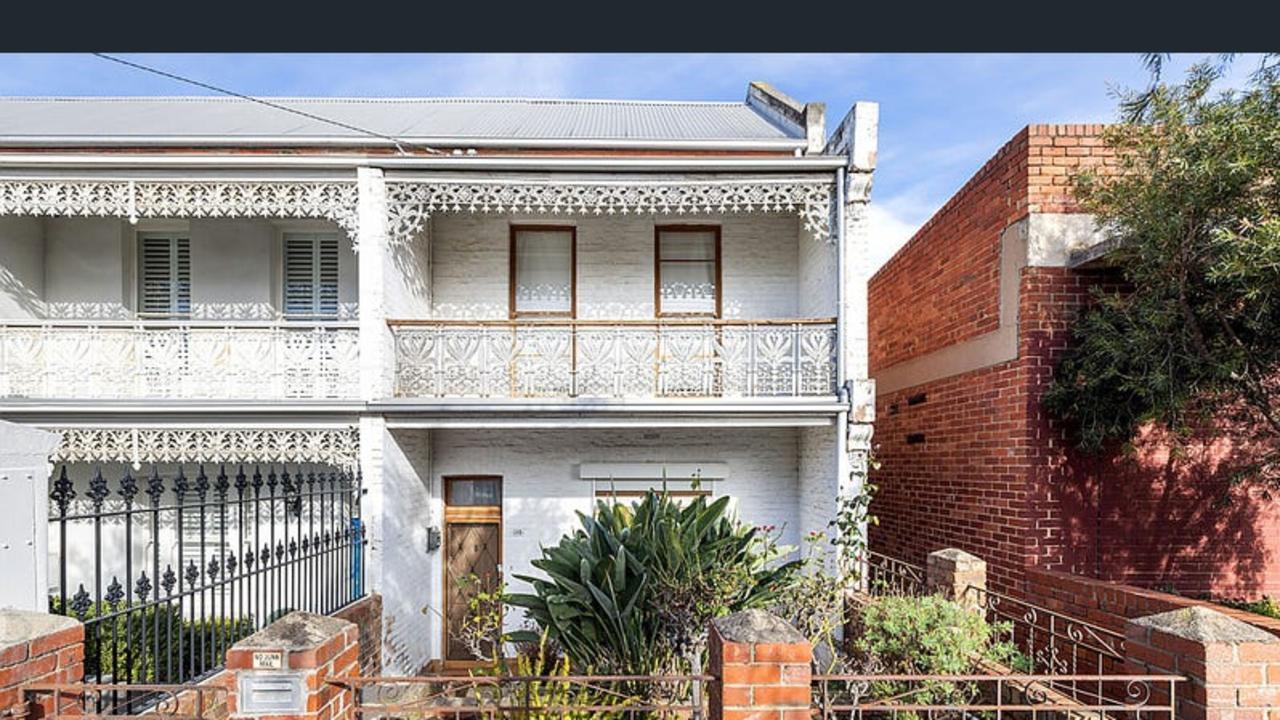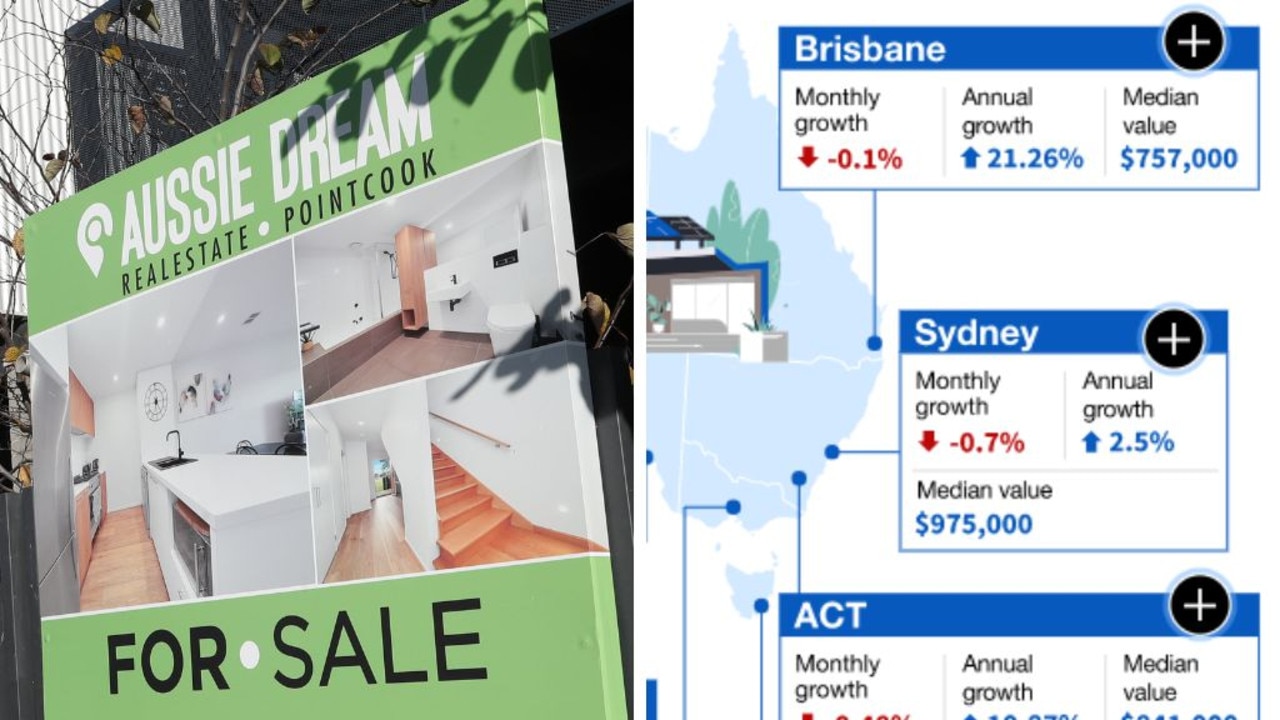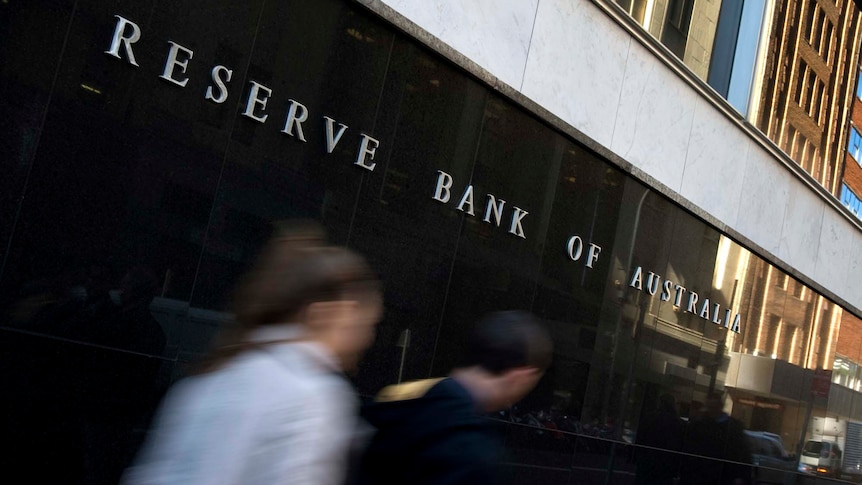Deep divisions are emerging among some of Australia’s leading bank economists on their outlook for interest rates and the Australian economy.
Key points:
- The major banks are split on cash rate forecasts, with Westpac and ANZ tipping a peak of 3.35 per cent and CBA 2.6 per cent
- Westpac’s chief economist warns inflation could get out of control if the RBA does not keep lifting rates decisively
- CBA’s head of Australian economics is warning of recession and housing crash risks if the cash rate passes 3 per cent
In one camp are those, such as the economists at Westpac and ANZ, who believe that the cash rate target will pass 3 per cent before the end of this year.
Both are tipping the RBA’s benchmark official rate to peak at 3.35 per cent — it is currently 1.85 per cent — meaning interest rates would almost double from where they are, rising by another 1.5 percentage points over the next six months or so.
The cash rate target was just 0.1 per cent at the beginning of May.
In fact, Westpac’s chief economist Bill Evans is not only predicting the cash rate will get to 3.35 per cent, but arguing it must if the Reserve Bank is serious about bringing down inflation.
“The key reason why we insist that a sharper slowdown in demand is required in 2023 is that a much stronger set of demand conditions … runs the risk of resilient high inflationary expectations,” he wrote in response to the RBA’s Statement on Monetary Policy, released on Friday.
The Reserve Bank used market forecasts of a 3 per cent cash rate to underpin its latest economic forecasts, which did not have inflation falling back even to the top of its 2–3 per cent target range until the end of 2024.
Mr Evans said those forecasts showed that the RBA should raise rates more aggressively, even at the expense of slower economic growth — Westpac’s modeling tips annual economic growth of just 1 per cent next year if rates hit 3.35 per cent.
“Such an approach would give the bank the best chance of managing this difficult task of returning inflationary expectations to more normal levels and deflating the current ‘inflationary psychology’ which is now at risk of taking hold,” he said.
Too many rate rises could ‘take the economy backwards’
Then there is the other camp of economists, represented by the Commonwealth Bank and NAB among the big four, who cannot see the cash rate getting above 3 per cent in the near future.
“I don’t think it’s likely to happen because I think the Reserve Bank, once they get the cash rate to around their estimate of neutral [somewhere near 2.5 per cent]will want to pause and actually see how the economy’s responding to the rate hikes that they’ve delivered,” CBA’s head of Australian economics Gareth Aird told RN Breakfast.
“They are putting through a lot of tightening in a very short amount of time and, if they continue to hike at the rate that they’re doing and just keep going all the way to 3 per cent and even above that level, they’ re not going to be able to actually assess the impact that those hikes are having on the economy in that in that amount of time.
“Now, it’s possible that they end up taking the cash rate to those levels, but I think if they do that, they’ll end up reversing gear in the not too distant future because … we have a highly indebted household sector in Australia and rate rises of that magnitude will just put too many households under stress and I think that will ultimately take the economy backwards.”
The Reserve Bank has recently changed its language slightly to emphasize that “it is not on a pre-set path”.
“The size and timing of future interest rate increases will be guided by the incoming data and the board’s assessment of the outlook for inflation and the labor market,” RBA governor Philip Lowe said after last week’s latest half-a-percentage-point rate rise .
Mr Aird is taking the RBA at his word and believes the economic data will soon give it reasons to stop raising rates.
“I think we’re going to see in the not-too-distant future that the economy is slowing down pretty materially, given how quickly they’ve taken the cash up right now,” he said.
Mr Aird bases that view in large part on CBA’s own in-house economic data, drawn from the millions of customers who bank with Australia’s largest financial institution.
“I think the RBA has tended to focus on aggregates whereas, internally, we look at disaggregated data,” he explained.
“What it indicates to us is that there’s a lot of households that will feel the impact of the rate hikes immediately. As a result of these rate hikes, they’ll have to adjust the way they’re spending money.
“That then has an impact on household consumption.”
AMP Capital’s chief economist Shane Oliver does not have access to the wealth of internal data at CBA but has observed other early indicators that the economy is losing steam.
“There is tentative evidence that this is starting to show up in slowing consumer spending with credit and debit card transactions looking like they are slowing, hotel and restaurant bookings looking like they are rolling over, and July retail sales implying now falling retail sales in real terms,” he wrote in a recent note.
Dr Oliver has the same 2.6-per-cent peak cash rate forecast as Gareth Aird, and for similar reasons.
“A rise in the cash rate to 3 per cent or more would push total mortgage repayments [i.e. interest and principal] to record highs relative to household income,” he observed, noting that the situation would be even worse for recent home buyers.
“Averages can be deceiving — a bit like having one arm in the freezer and one in the oven and saying on average you are okay.
“While RBA analysis shows that just over one-third of households with a variable rate mortgage will see no increase in their payments with a 3 per cent rise in interest rates, more than a third of all households with a mortgage – whether variable or fixed — will see a greater than 40 per cent increase (and much more so for those on fixed rates).
“Roughly speaking, this is about 1.3 million households.”
Risk of housing crash amid ‘forced sales’
Dr Oliver warned that these households are facing a triple whammy — rising rates, falling real wages and a decline in the value of their homes.
“[Rising mortgage repayments]at a time of falling real wages, will have a huge impact on spending in the economy and risk a significant rise in forced property sales,” he noted.
“Coming at a time when home prices are already falling rapidly due to the impact of rising rates on home buyer demand, it will only add to home price falls, which will weigh further on consumer spending.”
Even though the Reserve Bank does not have any mandate to target property prices, Gareth Aird agreed with Shane Oliver that it would be a major consideration, given the effect that a perceived fall in wealth is likely to have on consumer spending.
CBA’s forecast is for a major property market correction that risks turning into what market traders would generally define as a crash — where prices fall at least 20 per cent from their peak.
“We’re looking for around about 15 per cent peak to trough — that’s conditional on the cash rate getting to 2.6 per cent,” he said.
“If the RBA was to take the cash rate higher than that then we’d be forecasting a bigger fall in home prices.”
However, Mr Aird does not think that is likely.
“We’re actually thinking that rates will go down in the second half of next year, such is the weight that these higher rates will actually have on the household sector.”
Shane Oliver is also optimistic that the cash rate will not need to rise much further to tame inflation, as some of the biggest price rises stop of their own accord.
“Core inflation in the US is showing signs of having peaked and Australia appears to be following the US by about six months, pointing to a peak in inflation here later this year,” he argued.
“A return to more normal weather after the floods should also help lower local food prices.”
The difference between a 2.6 per cent cash rate and a 3.35 per cent cash rate is around $284 a month for someone with a 30-year $600,000 mortgage, so a lot of Australians with home loans will be barracking for Aird and Oliver in the battle of the forecasts.
.








